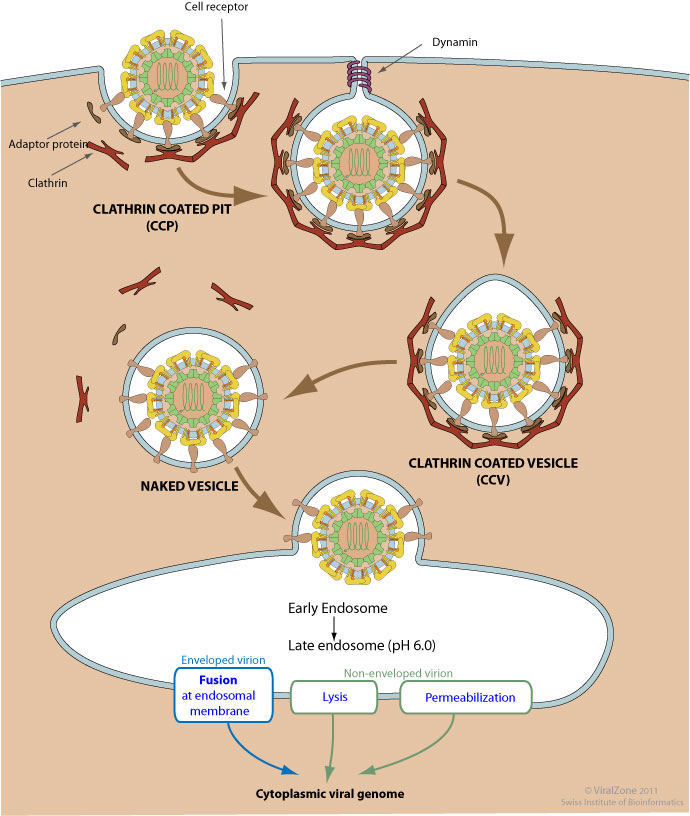
Clathrin-mediated endoycytosis (CME) is triggered by the binding of the virion to host receptors
 .
The virion attachment to the host receptor induces the binding of an adaptor protein to the receptor cytoplasmic tail. Adaptor proteins bind to clathrin, and the local concentration of adaptor proteins on the inside face of the plasma membrane allows clathrin to multimerize to form characteristic invaginations or Clathrin-Coated Pit (CCP). Membrane scission proteins DNM1/Dynamin-1 or DNM2/Dynamin-2 pinch off the CCP from the host membrane thereby releasing the Clathrin-Coated Vesicle (CCV).
.
The virion attachment to the host receptor induces the binding of an adaptor protein to the receptor cytoplasmic tail. Adaptor proteins bind to clathrin, and the local concentration of adaptor proteins on the inside face of the plasma membrane allows clathrin to multimerize to form characteristic invaginations or Clathrin-Coated Pit (CCP). Membrane scission proteins DNM1/Dynamin-1 or DNM2/Dynamin-2 pinch off the CCP from the host membrane thereby releasing the Clathrin-Coated Vesicle (CCV).
The clathrin basket is subsequently released from the vesicle by auxilin and hsc70. The vesicle then delivers its viral content to early endosomes. Endosomal acidic pH and /or receptor binding usually induces structural modifications of the virus surface proteins that leads to genome penetration into the cytoplasm via fusion or permeabilization mechanisms.

